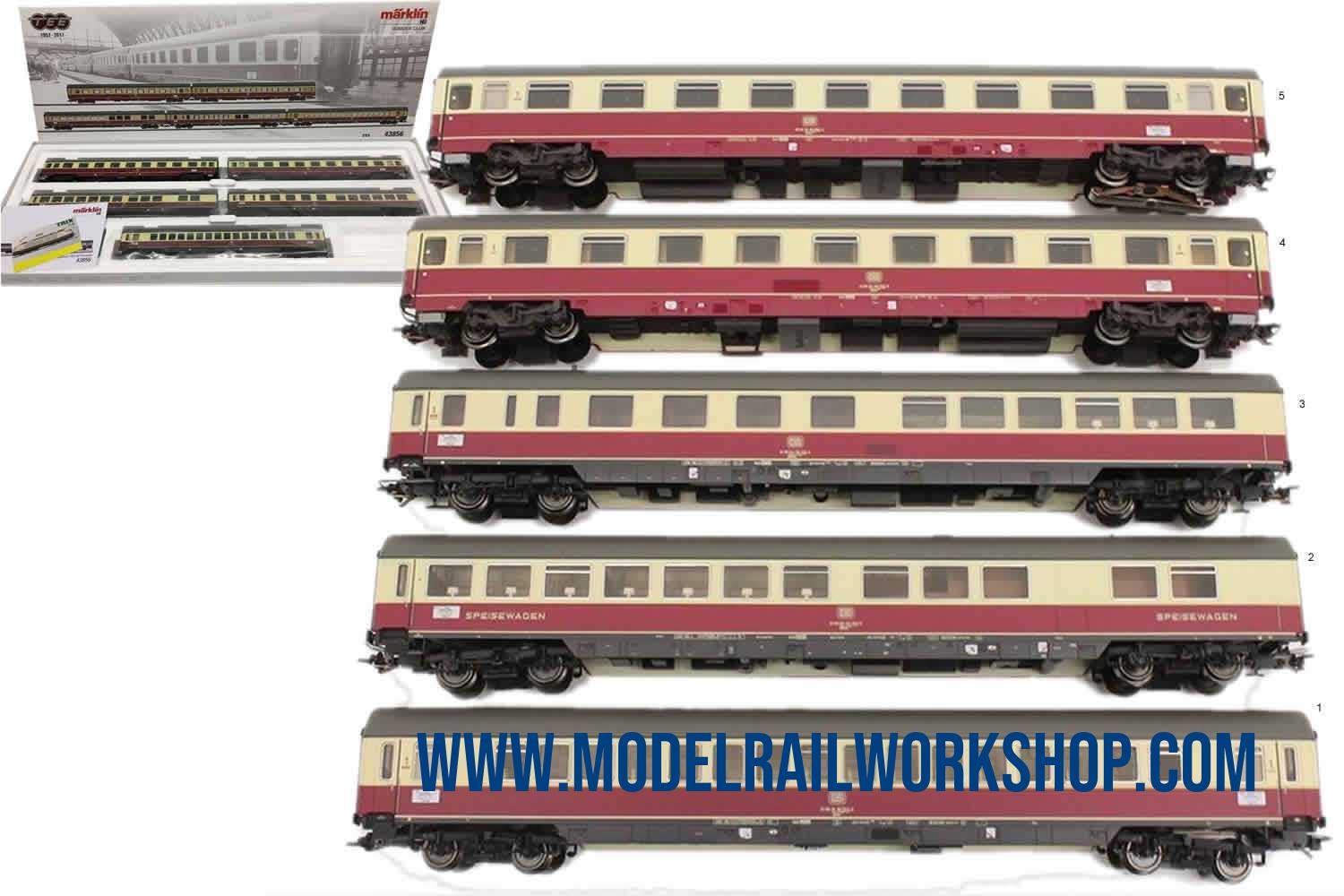
| KEY DATA | |
|---|---|
| Product Name | 43856 Passenger car set with five cars - TEE Rheingold 32 Parsif |
| Object type | Car-Passenger |
| Product Line | Märklin MHI |
| Era | 1970-1990 (IV) |
| Manufactured years | 2017-2018 |
| Type of housing | Synthetic |
| Length | 142.0 cm (28.2 cm) |
| Technology | - |
| Railway company | DE-DB |
| Märklin RRP (Year) | 370€ (2018) |
| Koll valuation (Year) | 335€ (2022) |
| Url to Märklin | Klick to GoTo www.maerklin.de |
| No | Obj.No | Obj.txt | Category | Description |
|---|---|---|---|---|
| 43856-1 | 61 80 18-90 024-0 | DB | Apmz 121 | Passenger car - 1st cl - 28.2 cm - red/beige |
| 43856-2 | 61 80 84-90 102-3 | DB - Speisewagen | ARDmh 105 | Restaurant car - 28.2 cm - red/beige |
| 43856-3 | 61 80 88-92 103-5 | DB | WRmh 132 | Passenger car - 1st cl - 28.2 cm - red/beige |
| 43856-4 | 61 80 19-90 582-6 | DB | Avmz 207 | Passenger car - 1st cl - 28.2 cm - red/beige |
| 43856-5 | 61 80 19-90 583-4 | DB | Avmz 207 | Passenger car - 1st cl - 28.2 cm - red/beige |
| Description | |
|---|---|